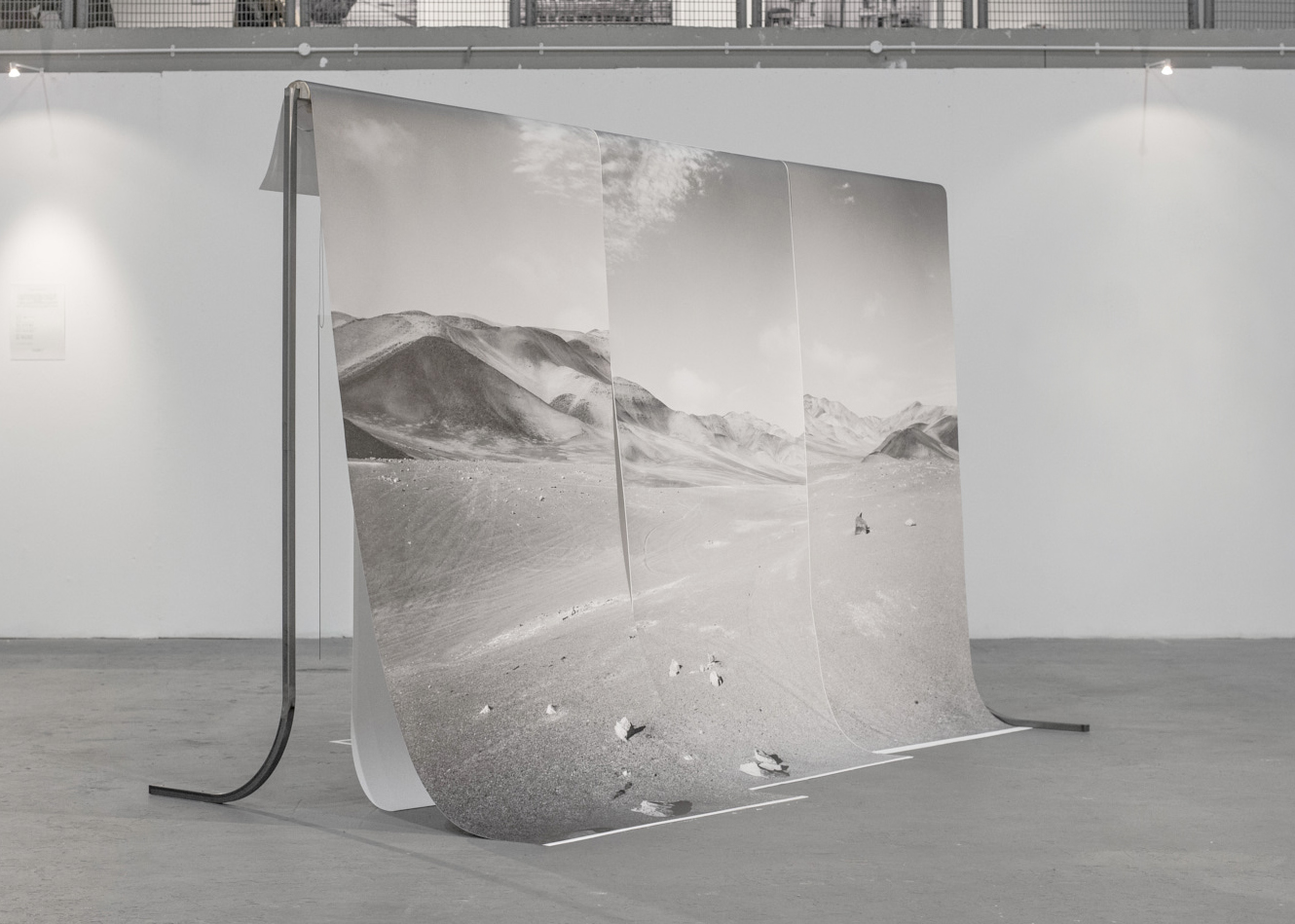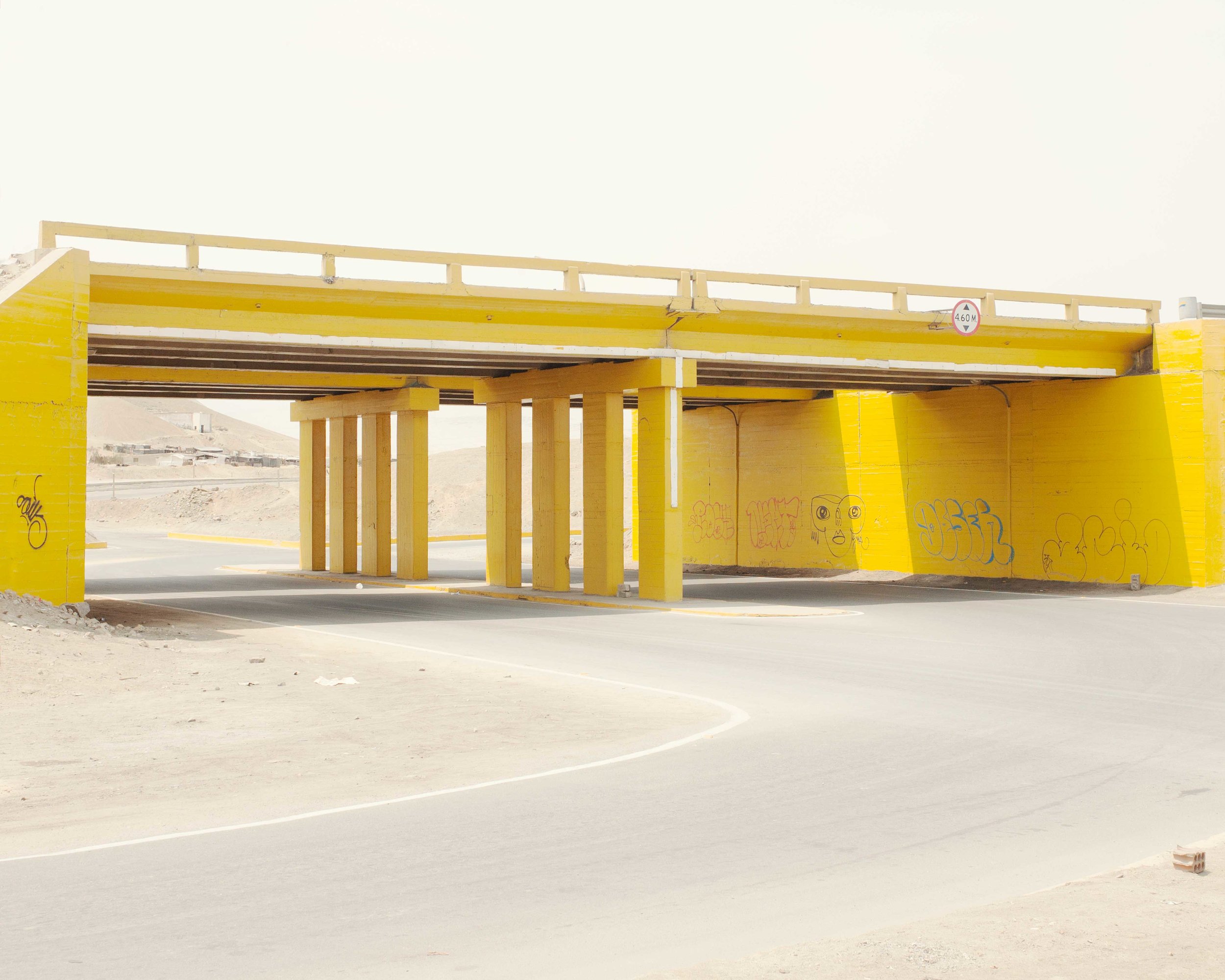Jorge Dieguez

"Vast spaces transport us into that intimate space, the threshold settles while contemplating an immense space, that contemplation of the immensity determines a pure state that takes us to a parallel world..."
Could you tell us a bit about yourself and your background? Where did you study?
I always describe and consider myself an architectural passionate and a techno lover, two things that definitely structure and define my practice. I am not obsess about architectural projects or iconic practices, however, I spend many hours of the day observing what surrounds us in order to understand how buildings or structures work and relate with us. This process brings up ideas that I can’t find anywhere else, I have a need to research the outside world 1st to then develop an idea in the studio. My work in commercial photography allows me to travel constantly and even I don’t have time to photograph as I want or focus in develop a project during those trips, I constantly use my phone to record any small detail or vast view that later will trigger a project or idea at the studio. On the other hand, techno music wraps up the aesthetics aims of my work, like: be repetitive, linear, clean, geometrical, consistent or methodical.
I studied architect in Peru and cinematography in Spain, then worked in ad campaigns for 6 years in Barcelona before moved to London, where I moved 6 years ago in order to concentrate in my work as visual artist, in 2016 I finished with honours an MA in photographic studies at Westminster University in London, under the tuition of Professor David Bate. My time during the MA was priceless, I had the opportunity to explore photography in a complete different way spending many days per week in the colour darkroom in order to understand the photographic process to later experiment with it. That time definitely fascinated me, as is very personal and independent. -I love photography because the process it involves and the possibilities it triggers during it. On the other hand, the course was quite theoretical, aspect that blended perfect with my practical interests; I think read and write about our own practice is as important as to make the work.
Co-existence - installation view
Co-existence - Composition-002
Co-existence - Composition-007
Your piece titled: "Stability & Construcivity" consists of large printed photographs draped over a metal frame, could you tell us about this piece? What are your thoughts behind displaying your photography in this way?
I fragmented the photograph in three different sections -3 strips-, each with its own dimensions, where from a unique viewer position shows a correct view of the landscape represented on the photograph. The sections rest on what should be a frame, suggesting that instead of the photograph be contented in the frame, it is resting on it. For that reason, the lower part of the metal frame it’s broken in half, each part become a leg of the piece that each go in a different ways, suggesting that the frame is open and the photograph it’s free from its conventional way of presentation. Also, that aspect enhance the concept that the piece doesn’t have front or back. Each side of the piece has its on way to present the photograph where together make a single piece that has many details and concepts working around.
I intent to give the viewer the freedom she/he deserve of how to experience the work and where she/he feels more comfortable for it, -I consider that as a very valuable aspect-. I feel that the work success if it allows the viewer to make their own decisions without losing its integrity.
There are many concepts around this piece and I work very hard to put all of them together, but that is the less important, because it is the dialogue between the work and viewer that prioritises over the rest.
Much of your photography is of vast vistas, often baron and lifeless. Could you tell us about these images?
Vast spaces both, populated or empty are things that always attracted me, contemplate them from a high point of view is a therapeutic process for me. I started my project Vastness after read Bachelard Gaston book, The Poetics of the Space, where he describes the existence of an intimate threshold that separates the known and unknown space.
Vast spaces transport us into that intimate space, the threshold settles while contemplating an immense space, that contemplation of the immensity determines a pure state that takes us to a parallel world, for that reason, be present in a great space is a personal moment constantly repressed by the everyday life.
Therefore, I feel that a vast space could positions us inside a dream and that is the reason why I have an internal need to walk to high points of view in order to photograph landscapes, empty or not, but the importance relies in an isolate personal moment that conjugated with technical aspects as large format photography, composition, colour, etc…makes the image. And I try to represent that in my work.
Stability and Constructivity
Stability and Constructivity (detail)
Stability and Constructivity (detail)
Stability and Constructivity
Tell us a bit about how you spend your day / studio routine? What is your studio like?
I share a studio with 2 other photographers, our work is very different between each other and that makes my studio days very pleasant, due the discussions that can be generated. I prefer not to research or reference others photographers work while I develop mine, however, I do much appreciate interactions and dialogues with fellow photographers whatever their practice is based on.
Within the studio I normally work in 2-3 things at the same time, it is important for me not to be immerse in only one project in order to find a balance and link concepts. Also, due the nature of my work, where I develop projects based on more pure photographic aspects and techniques as Vastness or Sur Chico and others where I use photography mixed with other medias as Co-existence and Stability & Constructivity.
I also work in commercial photography and film, for that reason my studio time is a combination between both worlds. However, my practice at the studio develops mainly in experiment with photography and to processes work untiringly as I normally work one image in many ways and re-use them several times -there is a personal necessity in bring value to all and never discard-.
How do you go about naming your work?
During the MA naming work was a big thing, where many tutors suggested that naming our work will complete it and we have to definitely do it in order to have a proper qualification/grade.
Personally, I think there is work that have to be named for maybe help the audience to engage with the work and there are artists that need to name their work in order to give a meaning to their work, but I certainly think there is work that doesn’t have that need. I consider important to title an exhibition, which conduct or support an statement, than name each piece for example.
However, I have to say that literature helps me to understand and opens many doors of how to name my work, I keep a list of words, phrases or even names that I find while reading that I could use later to name my work, that is my starting point at the time to name my work, the list also helps me as English is not my mother language and translate from Spanish to English frequently doesn’t work.
Sur Chico - Puente San Bartolo, 2012
Sur-Chico---Pucusana, 2014
Vastness---Desierto-Sur---Canâete
What artwork have you seen recently that has resonated with you?
Last year I visited Ashely Bickerton show at Newport Gallery in London, which fascinated me, I hardly new his work until I visited the show. To confront all this mixture of techniques, materials, colours and concepts impressed me massively. There were many aspects that caught my attention, from his very complex and very technical way his work is displayed and presented to an unexpected and real manner to work concepts as consumerism, like uncomfortable to see but at the same time pleasant to contemplate.
Is there anything new and exciting in the pipeline you would like to tell us about?
I just came back from a 2 months trip with my baby daughter and my girlfriend, I hardly did any work during our trip, however read lots, be in contact with the nature and got time to think and recap old ideas. I have 3 more pieces to present from my project Stability and Constructivity before summer.
And also I will be presenting my long term project Sur Chico in London and probably Peru this year, along with a book. A project that have taken me 6 years to complete.
All images are courtesy of the artist
Interview publish date: 15/02/2018



